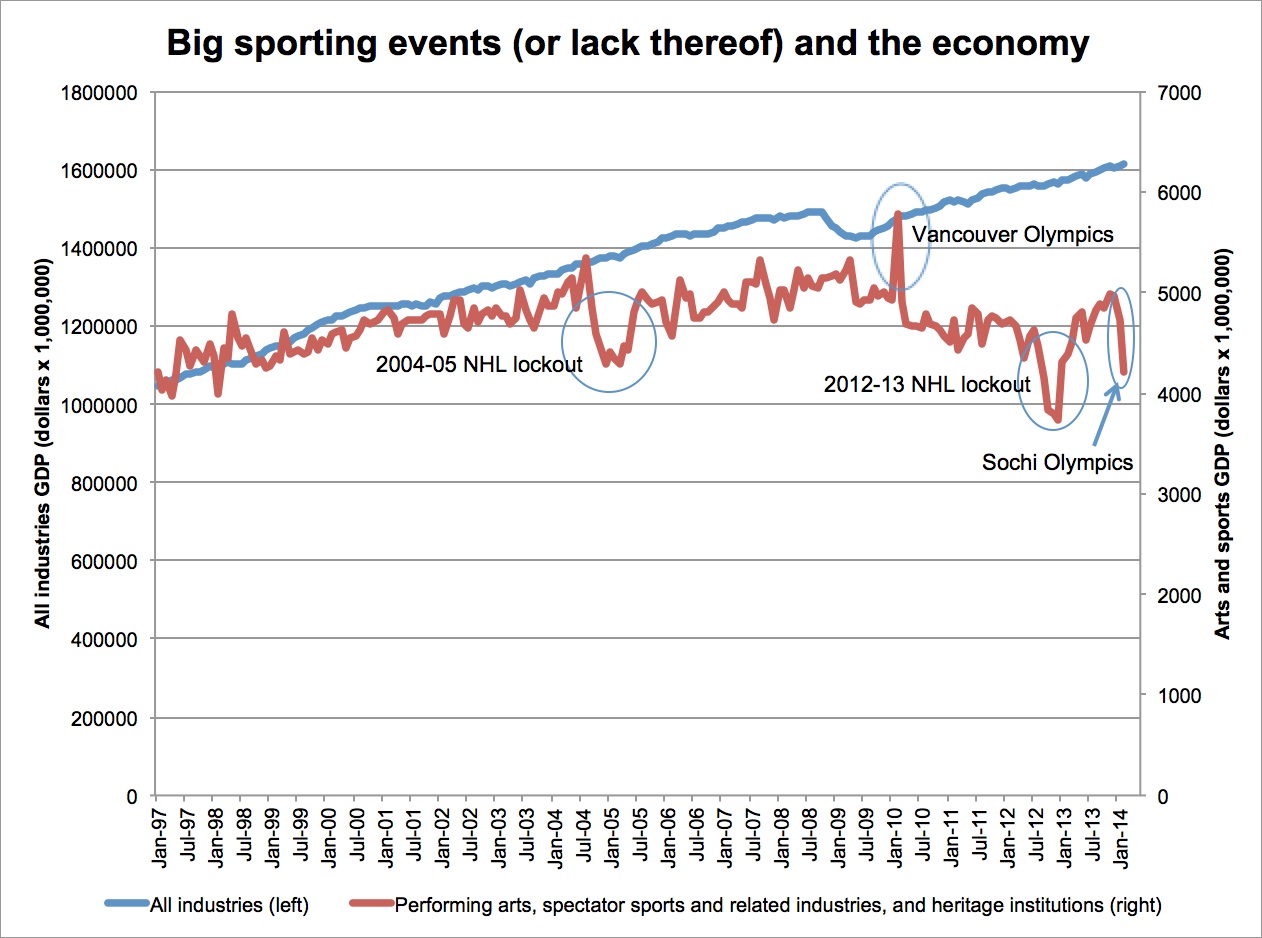Hockey and the hit to the economy
How sports shocks, both good and bad, have impacted the economy over the years
Chicago Blackhawks center Jonathan Toews is hit in the face by a high stick from Pittsburgh Penguins left wing Chris Kunitz (14) as Michal Rozsival (32) and Sidney Crosby (87) watch during the first period of an NHL Stadium Series hockey game at Soldier Field on Saturday, March 1, 2014, in Chicago. (AP Photo/Charles Rex Arbogast)
Share
Canada’s economy rose 0.2 per cent in February, which was generally what forecasters had expected. And aside from small declines in finance, agriculture and transportation, gains were seen across all industries—all, that is, except for one glaring slowdown: the arts and entertainment sector. In February that industry shrank by fully 5 per cent. What could account for such a shocking collapse in economic activity? Blame the Sochi Olympics. That’s because the National Hockey League was put on ice for the duration of the games so players could go to Russia to represent their countries.
Doug Porter, chief economist at the Bank of Montreal, sums up the impact:
The big downside surprise was a 5% plunge in the arts and entertainment sector, which was caused by the two-week shutdown of the NHL during the Sochi Olympics—proving, once again, hockey matters to this economy.
Though we already knew that, having gone through a lockout that shut down the entire 2004-05 season and blew a $170 million hole in the economy. That wound is very visible in the following chart, as are other sports shocks (good and bad) over the years. The blue line (left axis) is GDP for all industries, while the red (right side) captures the performing arts, spectator sports and related industries, and heritage institutions.
Two things jump out. First, even big swings in the sports and arts sub-industry have only a muted effect on the larger Canadian economy. Second, the industry is not doing well, and hasn’t been doing well since 2005—and the gap with the rest of the economy has widened since 2010. What could account for this? Here are some theories, but I’d be interested to hear what others think:
- After the 2004/05 NHL lockout, GDP for the arts and sports sector didn’t return to its previous high. Might it have been fans staying away from games in protest once hockey resumed? My colleague Jonathon Gatehouse doesn’t think so. As he wrote after the 2012 lockout, “the great lesson the NHL and its players learned from the 103-day lockout in 1994/95, and the debacle that was the lost 2004-05 season, was that the market wouldn’t punish them. Sure, there was the odd team that took a short-term drop at the gate, but on both occasions, fan anger dissipated like morning fog on a sunny day.” Still, I wonder if the chart hints at some lingering resentment.
- After the spike in economic activity from the Vancouver games, the industry began to shrink outright. The drop likely reflects consumer belt-tightening post-recession.
- We’re probably also seeing the impact of government cutbacks to spending on cultural and heritage events.
- A strong dollar since 2004 meant Canadians ramped up their travel to the U.S. and overseas, perhaps spending money there that might otherwise have gone to sporting and cultural events here.
- House prices began to take off in 2004, and accelerated sharply after 2009. Has that, and the coinciding boom in renovations, drawn away money from games and concerts?
- Lastly, the Internet has dramatically broadened our entertainment options at home. Why go out to a show when you can stay home and watch cat videos?
